Complaints Procedure in Accordance with ISO 17025
Complaints Procedure in ISO/IEC 17025
Every lab makes mistakes now and then. Whether it’s a delayed report, a misunderstood requirement, or a customer who’s simply not happy with the service, complaints are a normal part of business. What matters most is how your lab handles them. That’s where the Complaints Procedure in ISO/IEC 17025 comes in.
In simple terms, the Complaints Procedure in ISO/IEC 17025 refers to the process a laboratory must follow to receive, evaluate, investigate, and resolve complaints from clients or stakeholders. ISO doesn’t just want you to fix the problem—it wants you to do it fairly, transparently, and in a way that strengthens your system over time.
Let’s begin with the foundation: what the standard actually says about complaints.
Clause 7.9 Explained — Core ISO Requirements for Handling Complaints
ISO/IEC 17025:2017 lays out specific expectations for how labs must deal with complaints. Clause 7.9 is short, but it’s packed with must-haves. If your lab wants to stay compliant, your Complaints Procedure in ISO/IEC 17025 needs to cover these points clearly.
What Must Be Included in Your Procedure
Here’s what ISO requires you to include in your complaints procedure—no fluff, no guesswork:
-
A clear method for receiving complaints
Whether it’s a phone call, email, or feedback form, clients need a simple way to tell you something’s wrong. -
A process for validating complaints
Not every comment is a formal complaint. The lab must determine whether the issue qualifies under ISO’s definition. -
A system to assign responsibility
The person investigating the complaint must not be involved in the activity being questioned. Independence is key. -
A clear investigation and response process
The lab must take appropriate action to understand and resolve the issue—and inform the complainant of the outcome. -
A rule for communicating the final decision
Once the complaint is resolved, the client must be told formally, and documentation must be retained.
These aren’t suggestions—they are required elements in any compliant Complaints Procedure in ISO/IEC 17025.
The Lab’s Responsibility vs the Client’s Role
Some labs assume that if a client is vague or unclear, the responsibility ends there. But ISO sees it differently.
Under the Complaints Procedure in ISO/IEC 17025, it’s the lab’s job to:
-
Take every concern seriously
-
Clarify the complaint if needed
-
Investigate impartially
-
Respond in a timely and respectful way
The client’s role is simply to raise the concern. From there, it’s on the lab to handle it professionally and objectively—regardless of who was involved or what went wrong.
Remember, the point of having a robust Complaints Procedure in ISO/IEC 17025 isn’t just about fixing errors—it’s about maintaining trust, protecting your lab’s reputation, and improving your overall quality system.
Complaints Procedure in ISO/IEC 17025
In any lab, no matter how careful or well-managed, complaints are bound to happen. Maybe a customer didn’t get their report on time, or perhaps they disagree with a result. What matters most is how your lab handles those concerns—and that’s exactly why the Complaints Procedure in ISO/IEC 17025 exists.
Simply put, the Complaints Procedure in ISO/IEC 17025 is the standard’s way of making sure labs deal with complaints in a clear, fair, and traceable manner. It’s about taking every issue seriously, responding professionally, and learning from what went wrong. And it all starts with one crucial question: what exactly counts as a complaint?
Recognizing and Validating a Complaint
Not every piece of negative feedback is an official complaint. But under the Complaints Procedure in ISO/IEC 17025, it’s your lab’s responsibility to recognize when a concern crosses the line from casual comment to formal issue—and to treat it accordingly.
What Counts as a Formal Complaint Under ISO/IEC 17025
A formal complaint doesn’t have to come in the form of a signed letter or a long email. It can be something as simple as a phone call where a client expresses dissatisfaction with:
-
The quality or accuracy of results
-
A delay in delivering reports
-
The professionalism or behavior of staff
-
A miscommunication or unmet expectation
-
The lab’s response to a previous issue
In short, if a client expresses dissatisfaction with a service or result, and expects a response or resolution—it likely qualifies as a complaint. According to the Complaints Procedure in ISO/IEC 17025, these issues need to be recorded, evaluated, and followed through, even if they seem minor at first.
It’s always better to over-document than overlook. If you’re unsure whether a situation counts, treat it as a complaint and process it properly. That approach keeps your lab compliant and shows clients that you take their feedback seriously.
How to Ensure Impartial and Transparent Validation
Once a potential complaint is received, the next step in the Complaints Procedure in ISO/IEC 17025 is validation. This means reviewing the concern and deciding if it’s legitimate and falls within the lab’s responsibility.
To do this properly, your lab should:
-
Log the complaint with all available details (who, what, when, and how)
-
Review the situation without bias
-
Confirm that the complaint is related to activities covered by your quality management system
-
Determine whether the concern is genuine and actionable
Impartiality is key here. The person validating the complaint should not be directly involved in the activity being questioned. If they are, hand it off to someone else to avoid any conflict of interest.
This step may seem small, but it’s an essential part of the Complaints Procedure in ISO/IEC 17025. Validating a complaint ensures that it’s addressed with the right level of seriousness—and that your lab has a clear, consistent process for handling concerns fairly.
Assigning Responsibility Without Conflict of Interest
Once a complaint has been received and validated, the next big question is: Who’s going to handle it? And no, it can’t just be the person closest to the issue. One of the most important rules in the Complaints Procedure in ISO/IEC 17025 is that complaints must be handled impartially—by someone who’s not involved in the activity that led to the complaint in the first place.
Why? Because it’s hard to investigate fairly when you’re too close to the work. Think about it—if a technician is asked to review a complaint about their own test results, it’s just not objective. ISO knows this, and that’s why independence in complaint handling is a must.
Requirements for Independence in Handling Complaints
According to the Complaints Procedure in ISO/IEC 17025, whoever investigates or makes decisions about a complaint must be:
-
Independent from the work or personnel involved in the complaint
-
Qualified to evaluate the issue thoroughly and fairly
-
Authorized by the lab to carry out the investigation and recommend actions
In smaller labs, this can be a little tricky, since teams are lean and people wear multiple hats. But even in a small setup, you can assign complaint handling to a manager, quality officer, or even someone external, as long as they meet the independence requirement.
It’s perfectly okay to define this in your quality manual or procedure. That way, everyone knows upfront who’s allowed to handle complaints—and no one has to make it up on the spot when an issue arises.
Documenting Roles and Decision-Making Paths
Clear roles are essential. The Complaints Procedure in ISO/IEC 17025 isn’t just about what you do—it’s about being able to prove it.
That means your procedure should:
-
Specify who assigns complaints (typically the quality manager or top management)
-
List who is authorized to investigate based on the type of complaint
-
Include steps for escalating complex or sensitive complaints
-
Document every decision made during the process, along with who made it
The more transparent your internal process is, the easier it is to demonstrate compliance—and avoid misunderstandings with clients, auditors, or your own staff.
At the end of the day, the Complaints Procedure in ISO/IEC 17025 is all about fairness. Assigning responsibility the right way ensures that each complaint is handled with objectivity and professionalism, which builds trust and credibility for your lab.
Steps for Investigating and Responding to Complaints
Once a complaint is in the right hands, it’s time to move from validation to action. This is where your Complaints Procedure in ISO/IEC 17025 needs to be clear, structured, and timely. Clients expect their concerns to be taken seriously, and ISO expects you to prove it.
Now, don’t worry—you don’t need a complex flowchart. But you do need a few solid steps in place that guide how complaints are handled from start to finish.
ISO’s Expected Sequence: Receipt, Review, Investigation, Resolution
Here’s a simple breakdown of what the Complaints Procedure in ISO/IEC 17025 should cover when it comes to managing a complaint:
-
Receipt
First, log the complaint. Include all details—who reported it, when it happened, how it came in, and what the issue is about. Even informal complaints should be written down. -
Review
This is the validation step we talked about earlier. Confirm it’s a legitimate complaint and falls under your lab’s scope. -
Investigation
This part is key. The person handling the complaint (who, remember, must be independent) digs into the issue. That might include reviewing test records, speaking with staff, or checking procedures. -
Resolution
Once the facts are clear, your lab needs to take appropriate corrective action. Depending on the situation, this could mean re-issuing a report, clarifying a misunderstanding, or updating a process to prevent future issues.
Each of these steps should be documented. That’s not just for audits—it’s part of showing your lab’s integrity and professionalism through your Complaints Procedure in ISO/IEC 17025.
Communication Timeline and Customer Feedback Loop
One of the biggest mistakes labs make is going silent after a complaint is received. The client shouldn’t have to follow up again and again for an update.
That’s why part of your Complaints Procedure in ISO/IEC 17025 should include a communication timeline:
-
Acknowledge the complaint as soon as possible (ideally within 24–48 hours)
-
Keep the client updated during the investigation if it takes more than a few days
-
Provide a clear and formal response when the complaint is resolved
And don’t forget—ISO expects you to inform the complainant of the outcome. Even if the complaint is not upheld, you still need to explain the reasoning behind your decision.
Want to go the extra mile? Invite feedback after resolution. Something like, “Was this handled to your satisfaction?” not only builds trust—it can help you fine-tune your procedure for next time.
In the end, the Complaints Procedure in ISO/IEC 17025 isn’t just about ticking boxes. It’s about showing that your lab values client relationships and quality just as much as technical accuracy.
Recording, Tracking, and Retaining Complaint Data
If there’s one golden rule in ISO/IEC 17025, it’s this: if it’s not documented, it didn’t happen. That definitely applies to complaints. Even if your lab handled a client’s issue perfectly, you still need to be able to prove it. That’s why proper documentation is a critical part of the Complaints Procedure in ISO/IEC 17025.
Recording, tracking, and retaining complaint data isn’t about creating extra work—it’s about creating a reliable system that keeps your lab accountable and audit-ready.
What Records Must Include (With Real-World Examples)
Your complaint records should be clear, organized, and detailed enough to tell the full story of what happened. According to the Complaints Procedure in ISO/IEC 17025, here’s what you should be documenting:
-
Who submitted the complaint and how (email, phone, form, etc.)
-
What the complaint was about (be as specific as possible)
-
When it was received and acknowledged
-
Who handled the complaint and their role in the lab
-
What investigation was carried out and what was found
-
What actions were taken, including corrective or preventive steps
-
When and how the resolution was communicated to the client
-
Whether the client confirmed satisfaction (if applicable)
Let’s say a customer complains about inconsistent results between two batches. Your record should include the client’s original concern, how the lab verified the issue, the internal review steps taken, and the final explanation or fix. All of this becomes part of the documented Complaints Procedure in ISO/IEC 17025.
How Long Complaint Records Should Be Retained
Another important point: ISO wants you to retain complaint records for a defined period. There’s no exact number in the standard—it depends on your lab’s policies and legal/regulatory context—but it should be long enough to allow traceability and demonstrate conformity during assessments.
Many labs choose to retain complaint data for at least three to five years, often aligned with their retention policy for test or calibration records.
The key is consistency. Whatever retention period you choose, make sure it’s documented in your quality system—and that you follow it.
Also, make sure your system allows you to easily track and retrieve past complaints. Whether you use a spreadsheet, a database, or dedicated quality management software, the important thing is that the information is organized and accessible.
Why? Because during an audit, the assessor might ask:
“Can you show me how you handled the last complaint you received?”
And thanks to your solid Complaints Procedure in ISO/IEC 17025, you’ll be ready with a full record—start to finish.
Using Complaints to Strengthen the Management System
Let’s be real—no one enjoys dealing with complaints. But when handled the right way, complaints can actually become one of the most valuable tools your lab has for improvement. That’s part of the deeper purpose behind the Complaints Procedure in ISO/IEC 17025: not just fixing what went wrong, but learning from it.
Each complaint is a little spotlight, shining on a part of your system that may not be working as well as it should. And if you treat it as a chance to improve, rather than just a problem to patch, your lab gets stronger over time.
Link to Corrective Action and Risk-Based Thinking
A good Complaints Procedure in ISO/IEC 17025 doesn’t stop once the client gets their response. It continues with a question: “What does this tell us about our system?”
Here’s how a complaint can lead to real change:
-
Triggering a corrective action
If the complaint uncovered a recurring issue—like late reports or unclear test instructions—it may be a sign that your processes need adjusting. That’s where corrective actions come in. -
Identifying potential risks
ISO/IEC 17025 encourages labs to use risk-based thinking. Complaints often point to risks you hadn’t fully considered. Maybe the issue came from unclear communication, equipment maintenance gaps, or poor recordkeeping. Flag it. Learn from it. -
Preventing future issues
Once you understand the root cause of the complaint, you can update procedures, improve training, or refine templates to prevent the same thing from happening again.
In fact, linking your Complaints Procedure in ISO/IEC 17025 to your corrective action and risk processes isn’t just smart—it’s expected. ISO assessors often want to see how your complaints feed into the broader management system.
Feeding Complaint Trends Into Internal Audits and Reviews
One isolated complaint might not seem like much. But several complaints about similar issues? That’s a trend—and trends matter.
This is why your lab should regularly review complaint records and ask:
-
Are certain types of complaints coming up again and again?
-
Are they linked to specific departments, methods, or clients?
-
What have we changed as a result of past complaints?
The Complaints Procedure in ISO/IEC 17025 is most effective when it connects to your internal audit program and your management review meetings. Use complaints as data points. Bring them into discussions. Look at them as opportunities to refine your system, improve client satisfaction, and boost performance.
It’s easy to see complaints as a hassle. But with the right mindset—and a strong, consistent procedure—they can actually drive some of the most meaningful improvements in your lab.
Common Mistakes in the Complaints Procedure in ISO/IEC 17025
Even with the best intentions, labs sometimes trip up when it comes to handling complaints. And while ISO doesn’t expect perfection, it does expect a process that’s consistent, documented, and effective. Let’s go over a few of the most common mistakes made in the Complaints Procedure in ISO/IEC 17025, so you can sidestep them with confidence.
Ignoring Minor Issues That Count as Valid Complaints
This is a big one. Someone might make a passing comment like, “We got the report a bit late again,” and it’s brushed off as informal feedback. But under the Complaints Procedure in ISO/IEC 17025, if the client expresses dissatisfaction—and expects some sort of response—it likely qualifies as a complaint.
Don’t wait for a formal letter. Complaints can come through a quick phone call, an offhand email, or even a casual chat. If you’re unsure, it’s better to log it and handle it properly than to ignore it and miss a potential nonconformity.
Failing to Close the Loop
Sometimes labs start strong—they log the complaint, assign it, and even investigate it thoroughly. But then… silence. The client never hears back, or worse, the final outcome isn’t documented. That’s a direct gap in the Complaints Procedure in ISO/IEC 17025.
Closing the loop means:
-
Notifying the complainant of the outcome
-
Documenting what was communicated and when
-
Confirming the client is satisfied (when possible)
-
Ensuring all actions taken are logged
Leaving this step out weakens the trust you’re trying to build—and can hurt your audit trail.
Letting the Same Complaint Happen Again
If a client complains about unclear results, and then another client makes the same complaint three months later, that’s a sign your system didn’t really learn from the issue.
The Complaints Procedure in ISO/IEC 17025 should connect with your corrective action and improvement processes. If a complaint is valid, there should be a record of what changed as a result. If nothing changes, that’s when repeated issues start piling up—and ISO assessors notice.
Overcomplicating the Process
On the flip side, some labs build a complaints process so complex that staff avoid using it altogether. If it takes five approvals just to log a basic issue, that’s not efficient—and it doesn’t align with the intent behind the Complaints Procedure in ISO/IEC 17025.
The best procedures are clear, easy to follow, and known by everyone in the lab. Train your team, keep the process simple, and encourage early reporting.
Not Assigning an Independent Reviewer
Finally, make sure complaints aren’t handled by the same person who caused or was involved in the issue. This might sound obvious, but in small labs, it’s a common mistake. ISO is clear: the person responsible for handling the complaint must be impartial. This is non-negotiable in the Complaints Procedure in ISO/IEC 17025.
A good practice is to pre-define who’s authorized to investigate complaints, based on their role—not just availability.
Wrapping It Up: Why a Strong Complaints Procedure in ISO/IEC 17025 Matters
So, let’s step back for a second. At first glance, the Complaints Procedure in ISO/IEC 17025 might seem like just another requirement—a formality to tick off during an audit. But if you’ve followed along this far, you already know it’s much more than that.
A strong, well-managed Complaints Procedure in ISO/IEC 17025 is really about building trust—with your clients, your team, and your accreditation body. It proves that your lab doesn’t just deliver results—it listens, responds, and grows from feedback.
When handled the right way, complaints can become:
-
A chance to correct small issues before they grow
-
A way to improve communication and client satisfaction
-
A powerful tool for strengthening your quality system
The key is to make sure your procedure is clear, consistent, and easy for your team to follow. Remember to document each step, act quickly, assign responsibility fairly, and always close the loop with the client. These aren’t just ISO rules—they’re smart practices that protect your lab and elevate your reputation.
In the end, the Complaints Procedure in ISO/IEC 17025 is your lab’s opportunity to turn a negative experience into a positive one. And in today’s competitive world, that’s not just good for compliance—it’s good for business.
I hold a Master’s degree in Quality Management, and I’ve built my career specializing in the ISO/IEC 17000 series standards, including ISO/IEC 17025, ISO 15189, ISO/IEC 17020, and ISO/IEC 17065. My background includes hands-on experience in accreditation preparation, documentation development, and internal auditing for laboratories and certification bodies. I’ve worked closely with teams in testing, calibration, inspection, and medical laboratories, helping them achieve and maintain compliance with international accreditation requirements. I’ve also received professional training in internal audits for ISO/IEC 17025 and ISO 15189, with practical involvement in managing nonconformities, improving quality systems, and aligning operations with standard requirements. At QSE Academy, I contribute technical content that turns complex accreditation standards into practical, step-by-step guidance for labs and assessors around the world. I’m passionate about supporting quality-driven organizations and making the path to accreditation clear, structured, and achievable.

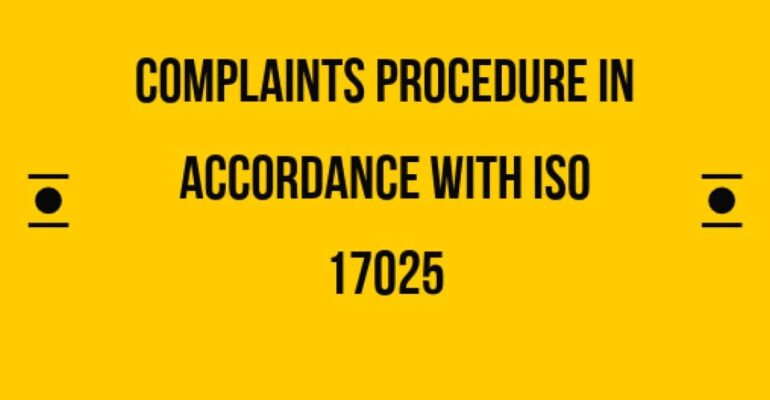
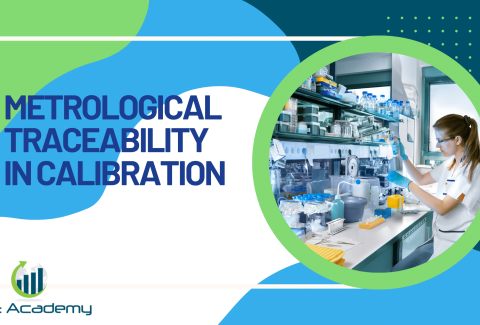
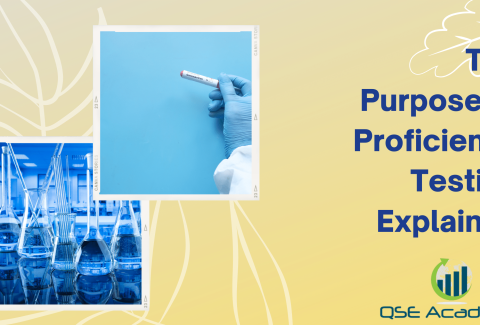







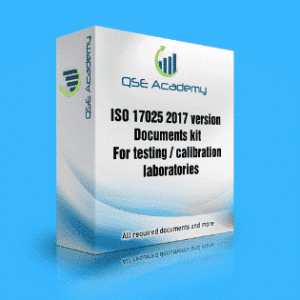

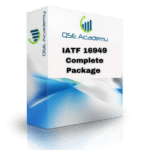
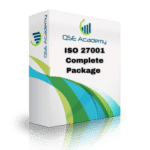
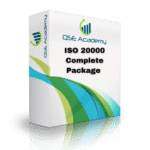



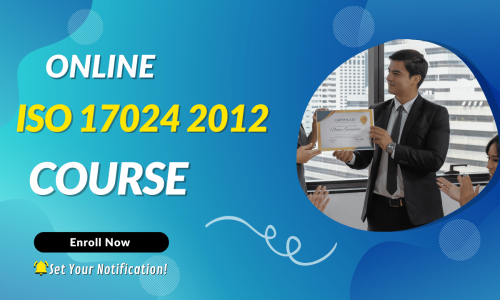


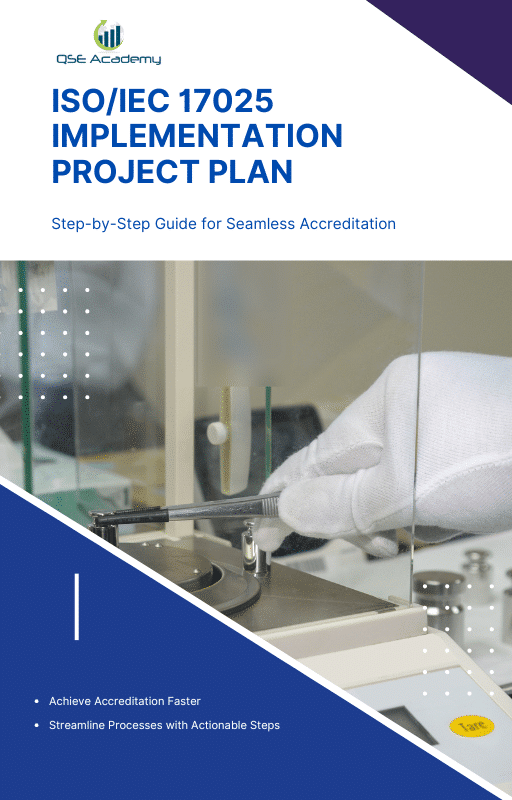
Comment (1)
Seiichi
Wondering if you have a guide for the Corrective Action & Improvement Request mentioned above?